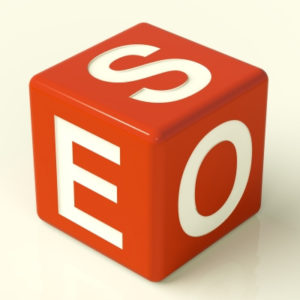 So, your business has invested a significant amount of time and money in its new web site. Are you satisfied with the traffic it’s getting?
So, your business has invested a significant amount of time and money in its new web site. Are you satisfied with the traffic it’s getting?
If the answer is no, think about this: it’s now commonplace for consumers to turn to search engines first before contacting local organizations or making buying decisions. According to a survey from Pew Research, 92% of Internet users use search engines, with 59% doing so on a daily basis. Your web site’s visibility on the web is more critical than ever, and if it’s like most companies, it’s got a lot of competition out there.
To increase your site’s performance, you need a search engine optimization (SEO) plan. SEO is a series of ongoing tasks that help search engines like Google, Yahoo!, and Bing find and index your site. This process helps to raise your site’s rankings on search engine results pages (SERPs), allowing more people to find your site. Organic SEO — what we focus on most — is a process that works to achieve a naturally high placement on SERPs, as opposed to SEO that relies on paid placement.
Need to understand the basics of SEO? Let’s break it down to the simplest concepts.
In general terms, search engines rank sites according to three basic attributes.
They tend to reward sites that are:
1) Relevant – How aligned is it with the keyword search?
2) Popular – How much traffic does it have?
3) Current – How much recent content does it have?
It’s common sense, when you think about it. To effectively provide answers to the millions of queries they receive every day, search engines want to serve up what most people care about: the most relevant, popular, and current information out there.
There’s a lot of complexity that goes into optimizing a web site organically so that search engines will rank it highly. But to boil it down to the basics, organic SEO involves a few core concepts:
Keywords. The name of the game in SEO is keywords. These words, and strings of words, work like glue to connect search engines to your web site. A good SEO strategy identifies keyword phrases that are actively searched for by industry and geographic area.
Content. Content development and maintenance is one of the most important things you can do to increase your site’s performance. From the placement of key information to the density of text on each page, search engines rank your site on a long list of content-related variables. Fresh, high-quality content attracts search engines and drives traffic to your site, but watch out — attempts to “game the system” can result in serious penalties from search engines. So it’s important to follow best practices when it comes to your web content.
Tags / Meta Data. Tags are another way in which your site talks to search engines. A key element in this category are title tags: are they simple or robust, auto-generated or carefully executed? Quality and care can make a big difference here. Much of the time, tags and meta data are inconspicuous or even invisible to users, but they’re not to search engines, so it’s critical not to ignore this SEO detail.
Site Architecture. Search engines need to be able to access your site easily. If they can, they’ll rank it higher. So your site should load quickly, work well for mobile devices, have meaningful URLs, and be built to allow search engines to easily “crawl” pages. Much of this work happens when a site is built, but a site’s architecture can be improved post-launch as well.
Links. One of the most important metrics that search engines use to determine the popularity of a web site is the number of credible and popular sites that link to it. These external links are the hardest to obtain, so search engines reward them highly. Other types of links also help in site optimization, so we work to include as many appropriate links as possible.
Off-Site Activity. To drive targeted web traffic to a particular site, some SEO work is performed elsewhere on the web. Social media and online advertising are examples of this off-site activity. Other marketing efforts that are completely off-line can help increase web traffic as well, such as the use of traditional marketing media and incentives that encourage web site visits.
Patience. Organic SEO takes time — often up to three to six months to see the full results of your optimization efforts. Adding Pay-Per-Click (PPC) to your SEO strategy can boost your results and allow them to show up sooner, but it can be an expensive endeavor that requires additional expertise.
This all sounds like a lot of work, and it is… but the good news is that it doesn’t all have to be done at once. You should never think of SEO as a one-time project anyway, but an ongoing process to stay competitive, so tackle only the most important items now if you have to, and build your searchability over time.
If your site’s online performance is less than ideal, an SEO assessment may be in order. Just give us a shout — we can help with as much or as little as you need to help give your web site the visibility, and performance, it needs.
